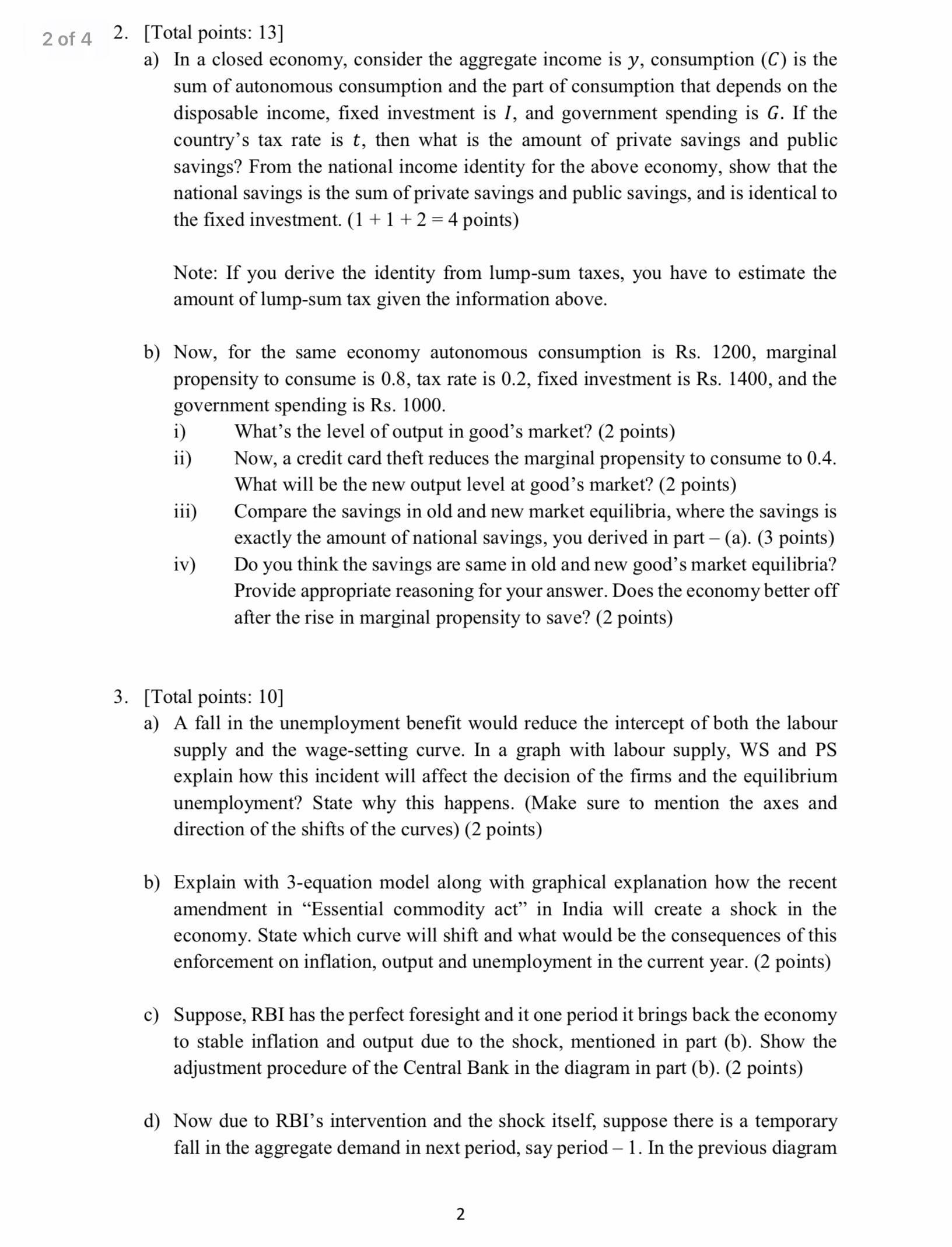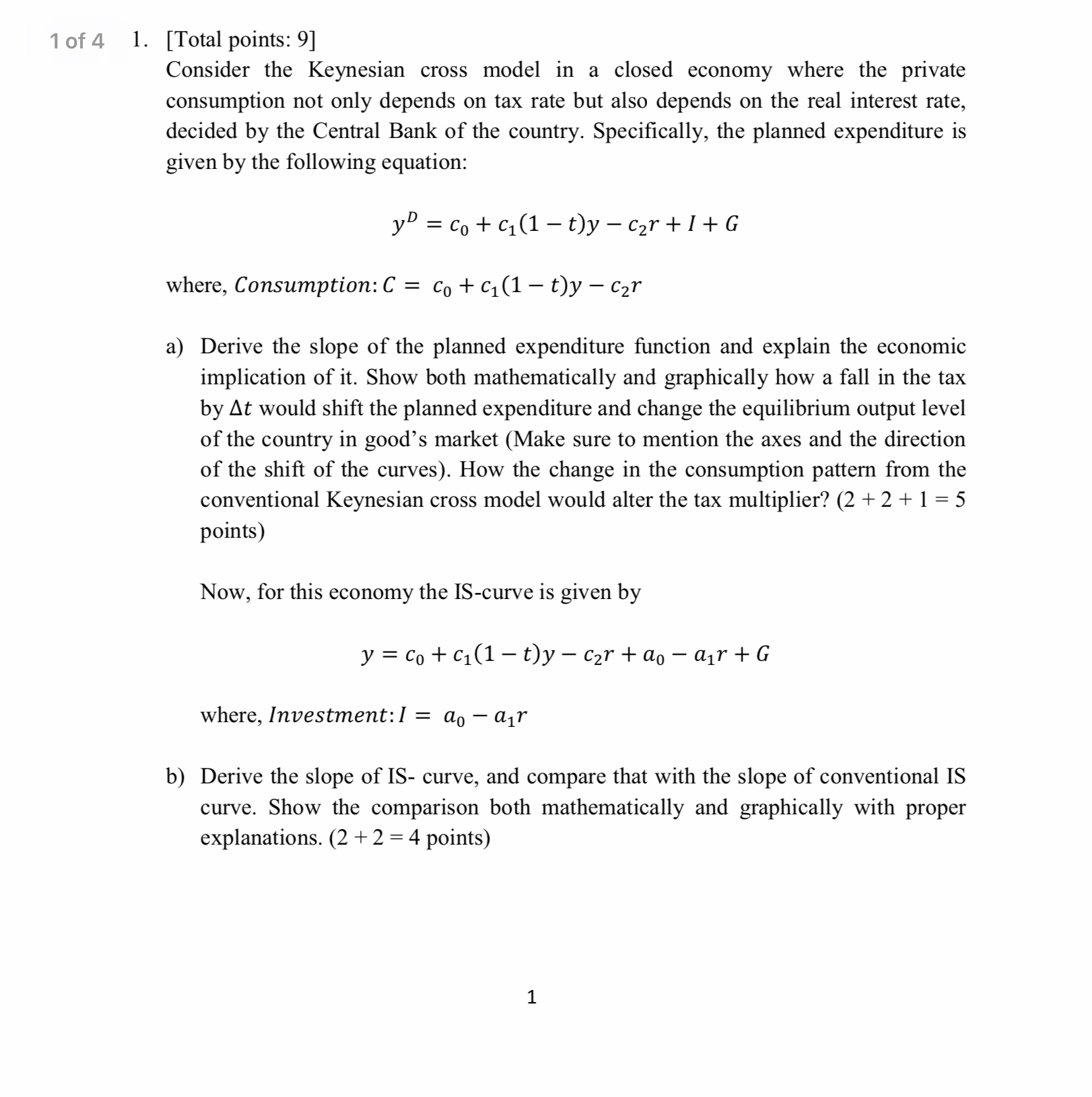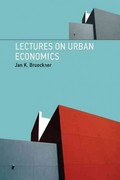I needed help with the question 1, 2 and 3
2 of 4 2. [Total points: 13] a) b) In a closed economy, consider the aggregate income is y, consumption (C) is the sum of autonomous consumption and the part of consumption that depends on the disposable income, xed investment is I, and government spending is G. If the country's tax rate is t, then what is the amount of private savings and public savings? From the national income identity for the above economy, show that the national savings is the sum of private savings and public savings, and is identical to the xed investment. (1 + l + 2 = 4 points) Note: If you derive the identity from lump-sum taxes, you have to estimate the amount of lump-sum tax given the information above. Now, for the same economy autonomous consumption is Rs. 1200, marginal propensity to consume is 0.8, tax rate is 0.2, xed investment is Rs. 1400, and the government spending is Rs. 1000. i) What's the level of output in good's market? (2 points) ii) Now, a credit card theft reduces the marginal propensity to consume to 0.4. What will be the new output level at good's market? (2 points) iii) Compare the savings in old and new market equilibria, where the savings is exactly the amount of national savings, you derived in part (a). (3 points) iv) Do you think the savings are same in old and new good's market equilibria? Provide appropriate reasoning for your answer. Does the economy better off after the rise in marginal propensity to save? (2 points) 3. [Total points: 10] a) b) d) A fall in the unemployment benet would reduce the intercept of both the labour supply and the wage-setting curve. In a graph with labour supply, WS and PS explain how this incident will affect the decision of the rms and the equilibrium unemployment? State why this happens. (Make sure to mention the axes and direction of the shifts of the curves) (2 points) Explain with 3-equation model along with graphical explanation how the recent amendment in \"Essential commodity act\" in India will create a shock in the economy. State which curve will shift and what would be the consequences of this enforcement on ination, output and unemployment in the current year. (2 points) Suppose, RBI has the perfect foresight and it one period it brings back the economy to stable ination and output due to the shock, mentioned in part (b). Show the adjustment procedure of the Central Bank in the diagram in part (b). (2 points) Now due to RBI's intervention and the shock itself, suppose there is a temporary fall in the aggregate demand in next period, say period l . In the previous diagram 1 of 4 1. [Total points: 9] Consider the Keynesian cross model in a closed economy where the private consumption not only depends on tax rate but also depends on the real interest rate, decided by the Central Bank of the country. Specically, the planned expenditure is given by the following equation: )1\" =c0+c1(1t)yc2r+l+6 where, Consumption: C = co + c1(1 t)y czr a) Derive the slope of the planned expenditure lnction and explain the economic implication of it. Show both mathematically and graphically how a fall in the tax by At would shift the planned expenditure and change the equilibrium output level of the country in good's market (Make sure to mention the axes and the direction of the shift of the curves). How the change in the consumption pattern from the conventional Keynesian cross model would alter the tax multiplier? (2 + 2 + 1 = 5 points) Now, for this economy the IS-curve is given by y=c0+cl(1t)yc2r+aOa1r+6 where, Investment] = a0 alr b) Derive the slope of IS curve, and compare that with the slope of conventional IS curve. Show the comparison both mathematically and graphically with proper explanations. (2 + 2 = 4 points) 30f4 show the effect of such fall in AD, and the Central Bank's response to bring the economy back to the medium-run equilibrium. (4 points)









